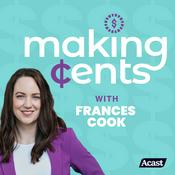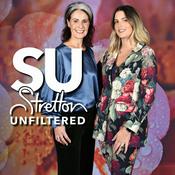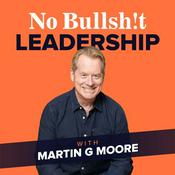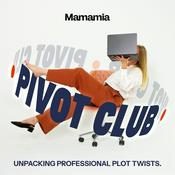Available Episodes
5 of 24
- Stop Losing Attendees in the Chaos: Smarter Paths Through the Event FloorIn the latest episode of Spatial Experience Design, MapsPeople’s Søren Vasø sits down with Johnny Sloan, SVP at Leap, to talk about what happens when events stop being static and start getting smart. Together, they explore what it takes to transform a high-density, high-stakes environment—like a comic con or fandom expo—into a thoughtfully designed journey that balances personalization with crowd flow, vendor needs, and real-world logistics. Their conversation touches on the friction points that event organizers are trying to solve, from helping attendees navigate chaotic venues, to using AI and data to surface the right content at the right time, to redefining what a “successful” event experience looks like from a metrics standpoint.Key Topics:Personalization through interest-based routingBooth discovery and vendor visibilityScavenger hunts as engagement toolsActivation metrics vs. ticket salesAI-driven suggestions and routingAdditional Resources:Connect with Søren VasøConnect with Johnny SloanOur YouTube ChannelSpatial Experience Design is produced by MapsPeople https://www.mapspeople.com--------33:44
- Spatial MCPs: The Secret Weapon for Building Experiences in 2025In this episode of Spatial Experience Design, MapsPeople’s CPTO Christian Christensen joins host Søren Vasø to unpack the rising role of spatial MCPs—Model Context Protocols that enable AI to understand tools, data, and context without custom code. From finding a quiet spot at a convention center to answering, “Will I make my flight?”, this conversation explores how MCPs simplify complex logic behind the scenes and create smarter, more human interactions. Whether you're building workplace apps, digital concierges, or spatially aware assistants, this episode makes the case for MCP as AI’s new favorite format.Key Topics:What Model Context Protocols (MCPs) are—and why they matter nowReal-world use cases: from flight timing to meeting room bookingsReducing developer overhead with plug-and-play backend logicThe shift from visual maps to natural-language, context-rich experiencesWhy MCPs future-proof your tech stack for multi-modal interactionAdditional Resources:Connect with Søren VasøConnect with Christian ChristensenOur YouTube ChannelSpatial Experience Design is produced by MapsPeople https://www.mapspeople.com--------27:43
- What's Missing From Your Airport Map?In this episode of Spatial Experience Design, MapsPeople Solutions Engineer Brynley Herbert joins host Søren Vasø to explore what today’s airport maps should be doing—and why most of them fall short. From live wait times at security to adaptive wayfinding for janitors, travelers, and accessibility needs, this conversation unpacks how responsive maps are improving the airport experience. We’re talking 3D storefronts, rideshare overlays, and staff-specific routing—all powered by shared infrastructure and smart data. Whether you’re running an airport, designing tech for travelers, or just wondering why an airport terminal always feels like a maze, this episode will reframe the digital map as a strategic asset.Key Topics:Strategies for intuitive navigation in airport experiencesAccessibility mapping and the European Accessibility ActRole-based map views for staff and travelersMap monetization through branded 3D assets and promosAdditional Resources:Connect with Søren VasøConnect with Brynley HerbertOur YouTube ChannelSpatial Experience Design is produced by MapsPeople https://www.mapspeople.com--------28:07
- How IPS Solves the ‘Friction’ Problem at Major EventsIn this episode of Spatial Experience Design, host Søren Vasø sits down with Crowd Connected’s CEO, James Cobb, to unpack how indoor positioning systems (IPS) are transforming navigation at large-scale events. They dive into the hidden friction between key attendee moments—lost time, missed meetings, inefficient crowd flow—and how IPS helps remove it. From real-time wayfinding to dynamic messaging and movement analytics, the conversation explores what it takes to support truly personalized journeys in complex, high-density environments. Along the way, they touch on event ROI, attendee expectations, and how knowing “where people are” unlocks value for both visitors and organizers.Key Topics:Indoor positioning systems (IPS)Wayfinding challenges at large-scale eventsPersonalizing journeys through spatial dataReal-time messaging and crowd flow managementImpact on attendee satisfaction and event ROIOrganizer insights from dynamic movement analyticsAdditional Resources:Connect with Søren VasøConnect with James Cobb Our YouTube ChannelSpatial Experience Design is produced by MapsPeople https://www.mapspeople.com--------23:34
- AI Built This in 5 Minutes: Maps, Chatbots, and What’s Possible NowIn this episode of Spatial Experience Design, in-house Senior Solutions Engineer Geoff Wakefield sits down with host Søren Vasø to explore how AI is removing technical barriers and unlocking faster experimentation. It's now quicker and easier than ever to turn creative spatial ideas into working experiences. Instead of static presentations, working prototypes can now be created in minutes using map data, SDK docs, and just a few smart prompts. We're talking chatbots that tell you where the nearest restroom is, real-time alerts that factor in transit time, and location-aware prompts that speak your language (literally). This is a deep dive into how AI is shrinking development time, unleashing creativity, and enabling anyone (not just developers) to build with spatial data. Whether you’re mapping office buildings, transit hubs, or event venues, this episode will change how you think about what’s possible.Key Topics:AI-powered demo generationUsing Claude for SDK-driven buildsAccelerating product ideation with LLMsAirport and office use case scenariosAdditional Resources:Connect with Søren VasøConnect with Geoff WakefieldOur YouTube ChannelSpatial Experience Design is produced by MapsPeople https://www.mapspeople.com--------28:23
More Business podcasts
Trending Business podcasts
About Spatial Experience Design (SXD)
Explore the future of built environments through the lens of Spatial Experience Design (SXD). Each episode dives into how technology, human insight, and user design intersect to shape workplaces, venues, and public spaces—making them more engaging, efficient, and meaningful. Join us as we uncover ideas that redefine how people connect with the spaces around them.
Podcast websiteListen to Spatial Experience Design (SXD), Where's My Money? and many other podcasts from around the world with the radio.net app

Get the free radio.net app
- Stations and podcasts to bookmark
- Stream via Wi-Fi or Bluetooth
- Supports Carplay & Android Auto
- Many other app features
Get the free radio.net app
- Stations and podcasts to bookmark
- Stream via Wi-Fi or Bluetooth
- Supports Carplay & Android Auto
- Many other app features


Spatial Experience Design (SXD)
Scan code,
download the app,
start listening.
download the app,
start listening.






































